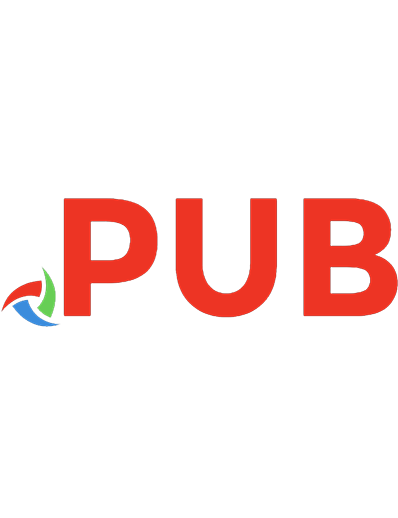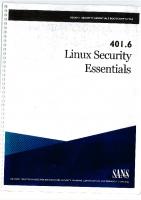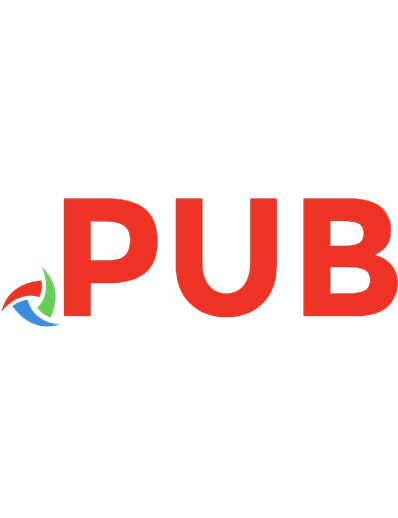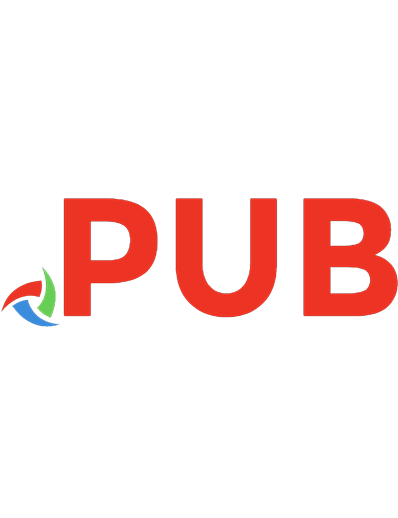Slackware Linux Essentials - The Official Guide to Slackware Linux [2 ed.] 1571763384
The Revised Slackware Book Project. David Cantrell, Logan Johnson, Alan Hicks Chris Lumens. 2nd edition, May 2005.
641 97 7MB
English Pages [288] Year 2005
![Slackware Linux Essentials - The Official Guide to Slackware Linux [2 ed.]
1571763384](https://dokumen.pub/img/200x200/slackware-linux-essentials-the-official-guide-to-slackware-linux-2nbsped-1571763384.jpg)
- Author / Uploaded
- David Cantrell
- Logan Johnson
- Alan Hicks
- Chris Lumens
- Categories
- Computers
- Operating Systems
Table of contents :
Slackware Linux Essentials 2nd edition - Front Cover
Slackware Linux Essentials - Half-title
Title Page
Printer's Imprint
Table of Contents
List of Tables / Figures / Examples
Preface
Intended Audience
Changes from the First Edition
Organization of this Book
Conventions used in this book
Typographic Conventions
User Input
Examples
Acknowledgments
Chapter 1 An Introduction to Slackware Linux
1.1 What is Linux?
1.1.1 A Word on GNU
1.2 What is Slackware?
1.3 Open Source and Free Software
Chapter 2 Help
2.1 System Help
2.1.1 man
2.1.2 The /usr/doc Directory
2.1.3 HOWTOs and mini-HOWTOs
2.2 Online Help
2.2.1 The Official Website and Help Forums
2.2.2 E-mail Support
2.2.2.1 Slackware Linux Project Mailing Lists
2.2.3 Non-Official Websites and Help Forums
2.2.3.1 Websites
2.2.3.2 Web-based Resources
2.2.3.3 Usenet Groups (NNTP)
Chapter 3 Installation
3.1 Getting Slackware
3.1.1 The Official Disc and Box Sets
3.1.2 Via the Internet
3.2 System Requirements
3.2.1 The Software Series
3.2.2 Installation Methods
3.2.2.1 Floppy
3.2.2.2 CD-ROM
3.2.2.3 NFS
3.2.3 Boot Disk
3.2.4 Root Disk
3.2.5 Supplemental Disk
3.2.6 Making the Disks
3.3 Partitioning
3.4 The setup Program
3.4.1 HELP
3.4.2 KEYMAP
3.4.3 ADDSWAP
3.4.4 TARGET
3.4.5 SOURCE
3.4.6 SELECT
3.4.7 INSTALL
3.4.8 CONFIGURE
3.4.8.1 Kernel selection
3.4.8.2 Make a boot disk
3.4.8.3 Modem
3.4.8.4 Timezone
3.4.8.5 Mouse
3.4.8.6 Hardware clock
3.4.8.7 Font
3.4.8.8 LILO
3.4.8.9 Network
3.4.8.10 X Window Manager
Chapter 4 System Configuration
4.1 System Overview
4.1.1 File System Layout
4.1.2 Finding Files
4.1.2.1 which
4.1.2.2 whereis
4.1.2.3 find
4.1.2.4 slocate
4.1.3 The /etc/rc.d Directory
4.1.3.1 System Startup
4.1.3.2 Runlevel Initialization Scripts
4.1.3.3 Network Initialization
4.1.3.4 System V Compatibility
4.1.3.5 Other Files
4.2 Selecting a Kernel
4.2.1 The /kernels Directory on the Slackware CD-ROM
4.2.2 Compiling a Kernel from Source
4.2.2.1 Linux Kernel version 2.4.x Compilation
4.2.2.2 Linux Kernel Version 2.6.x
4.2.3 Using Kernel Modules
Chapter 5 Network Configuration
5.1 Introduction: netconfig is your friend.
5.2 Network Hardware Configuration
5.2.1 Loading Network Modules
5.2.2 LAN (10/100/1000Base-T and Base-2) cards
5.2.3 Modems
5.2.4 PCMCIA
5.3 TCP/IP Configuration
5.3.1 DHCP
5.3.2 Static IP
5.3.3 /etc/rc.d/rc.inet1.conf
5.3.4 /etc/resolv.conf
5.3.5 /etc/hosts
5.4 PPP
5.4.1 pppsetup
5.4.2 /etc/ppp
5.5 Wireless
5.5.1 Hardware Support
5.5.2 Configure the Wireless Settings
5.5.3 Configure the Network
5.6 Network File Systems
5.6.1 SMB/Samba/CIFS
5.6.2 Network File System (NFS)
Chapter 6 X Configuration
6.1 xorgconfig
6.2 xorgsetup
6.3 xinitrc
6.4 xwmconfig
6.5 xdm
Chapter 7 Booting
7.1 LILO
7.2 LOADLIN
7.3 Dual Booting
7.3.1 Windows
7.3.1.1 Using LILO
7.3.1.2 Using LOADLIN
7.3.1.3 Deprecated Windows NT Hack
7.3.2 Linux
Chapter 8 The Shell
8.1 Users
8.1.1 Logging In
8.1.2 Root: The Superuser
8.2 The Command Line
8.2.1 Running Programs
8.2.2 Wildcard Matching
8.2.3 Input/Output Redirection and Piping
8.3 The Bourne Again Shell (bash)
8.3.1 Environment Variables
8.3.2 Tab Completion
8.4 Virtual Terminals
8.4.1 Screen
Chapter 9 Filesystem Structure
9.1 Ownership
9.2 Permissions
9.3 Links
9.4 Mounting Devices
9.4.1 fstab
9.4.2 mount and umount
9.5 NFS Mounts
Chapter 10 Handling Files and Directories
10.1 Navigation : ls, cd, and pwd
10.1.1 ls
10.1.2 cd
10.1.3 pwd
10.2 Pagers: more, less, and most
10.2.1 more
10.2.2 less
10.2.3 most
10.3 Simple Output: cat and echo
10.3.1 cat
10.3.2 echo
10.4 Creation: touch and mkdir
10.4.1 touch
10.4.2 mkdir
10.5 Copy and Move
10.5.1 cp
10.5.2 mv
10.6 Deletion: rm and rmdir
10.6.1 rm
10.6.2 rmdir
10.7 Aliasing files with ln
Chapter 11 Process Control
11.1 Backgrounding
11.2 Foregrounding
11.3 ps
11.4 kill
11.5 top
Chapter 12 Essential System Administration
12.1 Users and Groups
12.1.1 Supplied Scripts
12.1.2 Changing Passwords
12.1.3 Changing User Information
12.2 Users and Groups, the Hard Way
12.3 Shutting Down Properly
Chapter 13 Basic Network Commands
13.1 ping
13.2 traceroute
13.3 DNS Tools
13.3.1 host
13.3.2 nslookup
13.3.3 dig
13.4 finger
13.5 telnet
13.5.1 The other use of telnet
13.6 The Secure shell
13.7 email
13.7.1 pine
13.7.2 elm
13.7.3 mutt
13.7.4 nail
13.8 Browsers
13.8.1 lynx
13.8.2 links
13.8.3 wget
13.9 FTP Clients
13.9.1 ftp
13.9.2 ncftp
13.10 Talking to Other People
13.10.1 wall
13.10.2 talk
13.10.3 ytalk
Chapter 14 Security
14.1 Disabling Services
14.1.1 Services started from inetd
14.1.2 Services started from init scripts
14.2 Host Access Control
14.2.1 iptables
14.2.2 tcpwrappers
14.3 Keeping Current
14.3.1 slackware-security mailing list
14.3.2 The /patches directory
Chapter 15 Archive Files
15.1 gzip
15.2 bzip2
15.3 tar
15.4 zip
Chapter 16 Vi
16.1 Starting vi
16.2 Modes
16.2.1 Command Mode
16.2.2 Insert Mode
16.3 Opening Files
16.4 Saving Files
16.5 Quitting vi
16.6 vi Configuration
16.7 Vi Keys
Chapter 17 Emacs
17.1 Starting emacs
17.1.1 Command Keys
17.2 Buffers
17.3 Modes
17.3.1 Opening files
17.4 Basic Editing
17.5 Saving Files
17.5.1 Quitting Emacs
Chapter 18 Slackware Package Management
18.1 Overview of Package Format
18.2 Package Utilities
18.2.1 pkgtool
18.2.2 installpkg
18.2.3 removepkg
18.2.4 upgradepkg
18.2.5 rpm2tgz/rpm2targz
18.3 Making Packages
18.3.1 explodepkg
18.3.2 makepkg
18.3.3 SlackBuild Scripts
18.4 Making Tags and Tagfiles (for setup)
Chapter 19 ZipSlack
19.1 What is ZipSlack?
19.1.1 Advantages
19.1.2 Disadvantages
19.2 Getting ZipSlack
19.2.1 Installation
19.3 Booting ZipSlack
Glossary
Appendix A. The GNU General Public License
A.1. Preamble
A.2. TERMS AND CONDITIONS
A.3. How to Apply These Terms to Your New Programs
Index
Rear Cover









